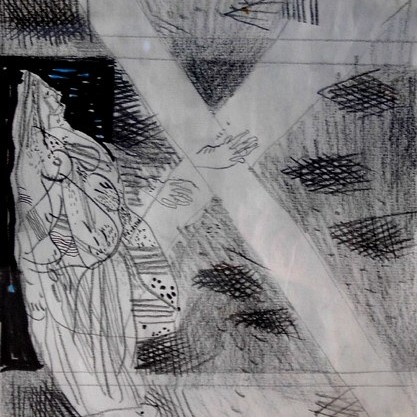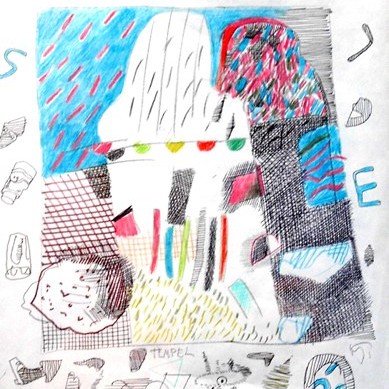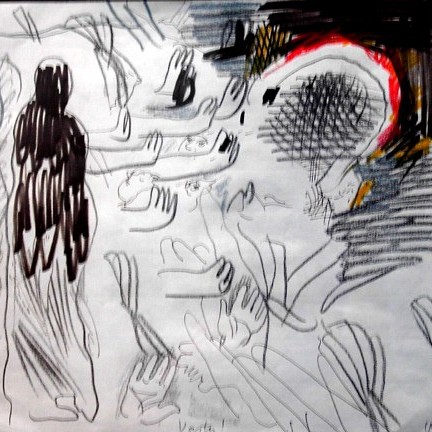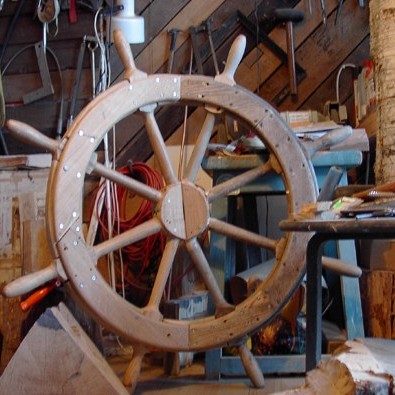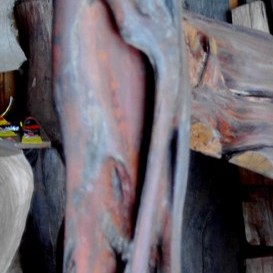Talking about Vive and Lembit Tolli without using of the title of \"the
classics\" seems to have been made impossible. Still, in a strange way, in case
of the Tollis this is justified only in such a case, when we conform the notion
of \"the classics\" suitable for the artists, when the Tollis determine the
notion of the \"the classics\" and not vice versa. So - let\'s see from the
perspective of the current exhibition, what the classics really means.
The classics means continuous changing,
continuous being on a highway. Vive Tolli has become the synonym of the Estonian
graphical art and it is only good, as so it refers to the diversity of the
Estonian graphical art and the existence of its sub-currents. The current
exhibition of Tolli covers the period 1967 - 2003, making an incision into
different stages of the creation of one artist. Melting out from that the \"Vive
Tolli - handwriting\" is more complicated than it has been thought to be. After
having seen the drawings which were made in the 1960ies, 1970ies and 1980ies, we
can not only limit ourselves to the key words \"using of etnographic symbols\",
\"scanty using of colour\", \"metaphysical and eternal environment\" and \"perfect
command of the techniques of the graphic art\". To the beforementioned can be
added \"occasionality\", \"drawing-style improvisation, \"playfulness, playfulness,
playfulness\". These works contain a lot of air, colour that has not been used in
the Baroqye-style plentiful manner, but which has been carefully controlled.
While leaping in time a couple of decades forward, we see totally different
works: large, even monumental and considerably smaller graphical sheets that do
not open up at the first time. Instead of stilisation of the Tolli-style ancient
signs and symbols we see totally new figures that are at the same time endlessly
graphical, possessing endlessly big force of validity. These are signs that
carry in themselves rather the graphical memory of Vive Tolli than the national
memory. In case of need we may even assert that these works do not only explore
the architext of one nation, but the architext of graphical art as such -
aspects, which have been characteristic to the graphical art from the beginning
of times, from what starts every possible talking of the graphical art. It
is standing barefoot on a highway, eternally constant and congealing, with a
tiny smile on the face...
Eternal changing has also entered the
creation of Lembit Tolli. In the conditions of political harrassment and in the
atmosphere, limiting every kind of freedom, Tolli turned for a long period to
small-sized sculpture. Wooden sculptures, being exposed at the current
exhibition, have become characteristic to the Tolli\'s creation only in the last
decade, but we can already draw some imprudent parallels with Vive Tolli.
Because isn\'t it so that in his work also Lembit Tolli often reaches out to test
the initial features of sculpture, the recognition of the sculptural form? He
often uses found objects which he stylizes with such a care as Vive Tolli does
it with old family signs, bringing out the sculptural sides of a seemingly old
piece of wood that possesses no value for the sawmill. Joining of the nature and
culture does not mean in case of Tolli the domination of the latter over the
former, seizing of the nature with a firm grip and labelling it with human
signs. Tolli possesses the skill to see in the nature simultaneously the natural
and the human. Why do we then say that it is walking on foot on the highway? Why
don\'t we say that the highway has been covered with grass for a long time, the
asphalt has become crumbly and passing by has remained to the past? Why don\'t we
say that quick driving on a highway is stupid and self-forgetting?
Forgetting oneself...
Isn\'t it so that this old piece of wood and this graphic \"scribble\" try to
tell us something very important?
Let\'s try. The hand break is down on the right.
.png)

